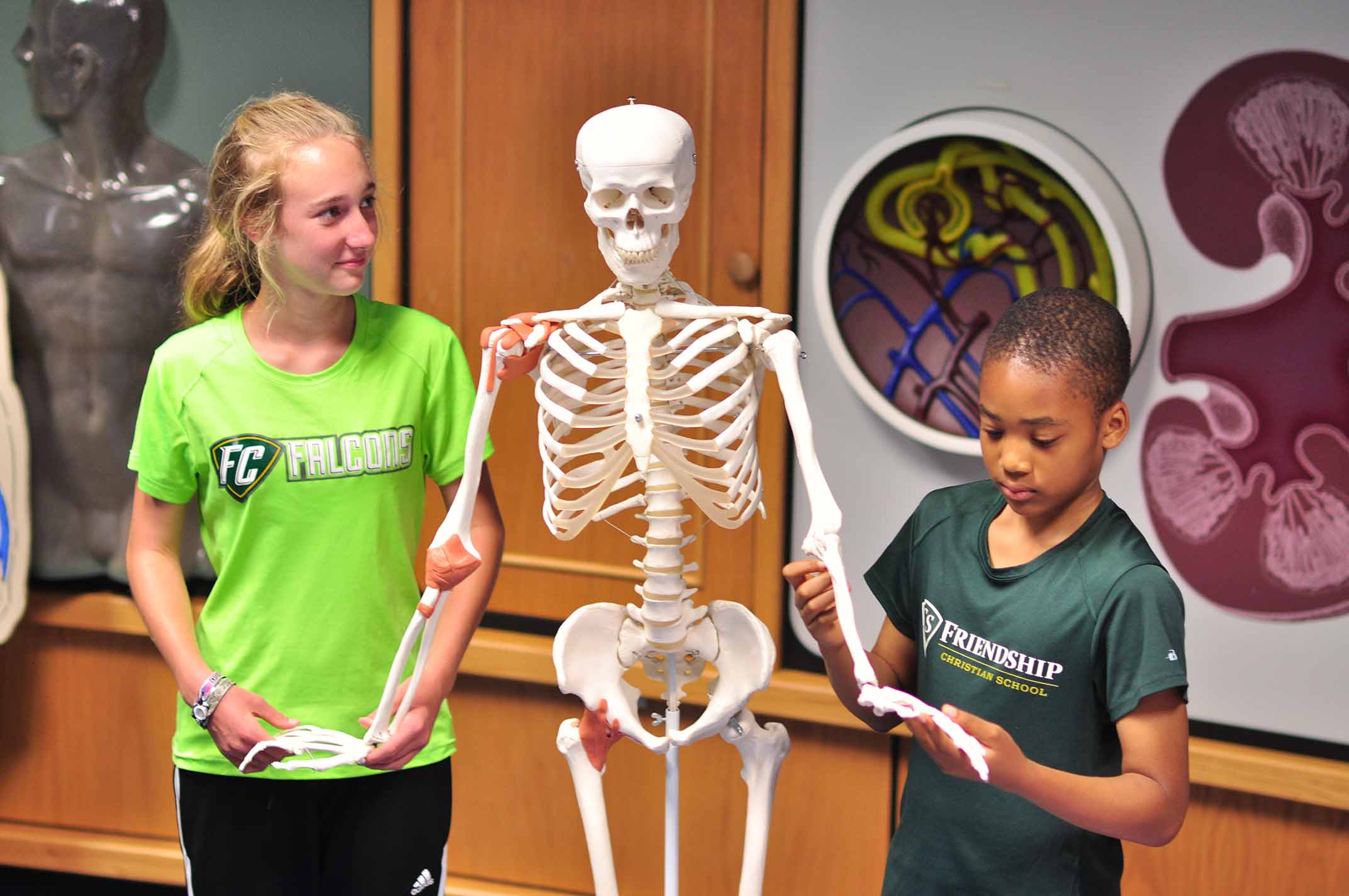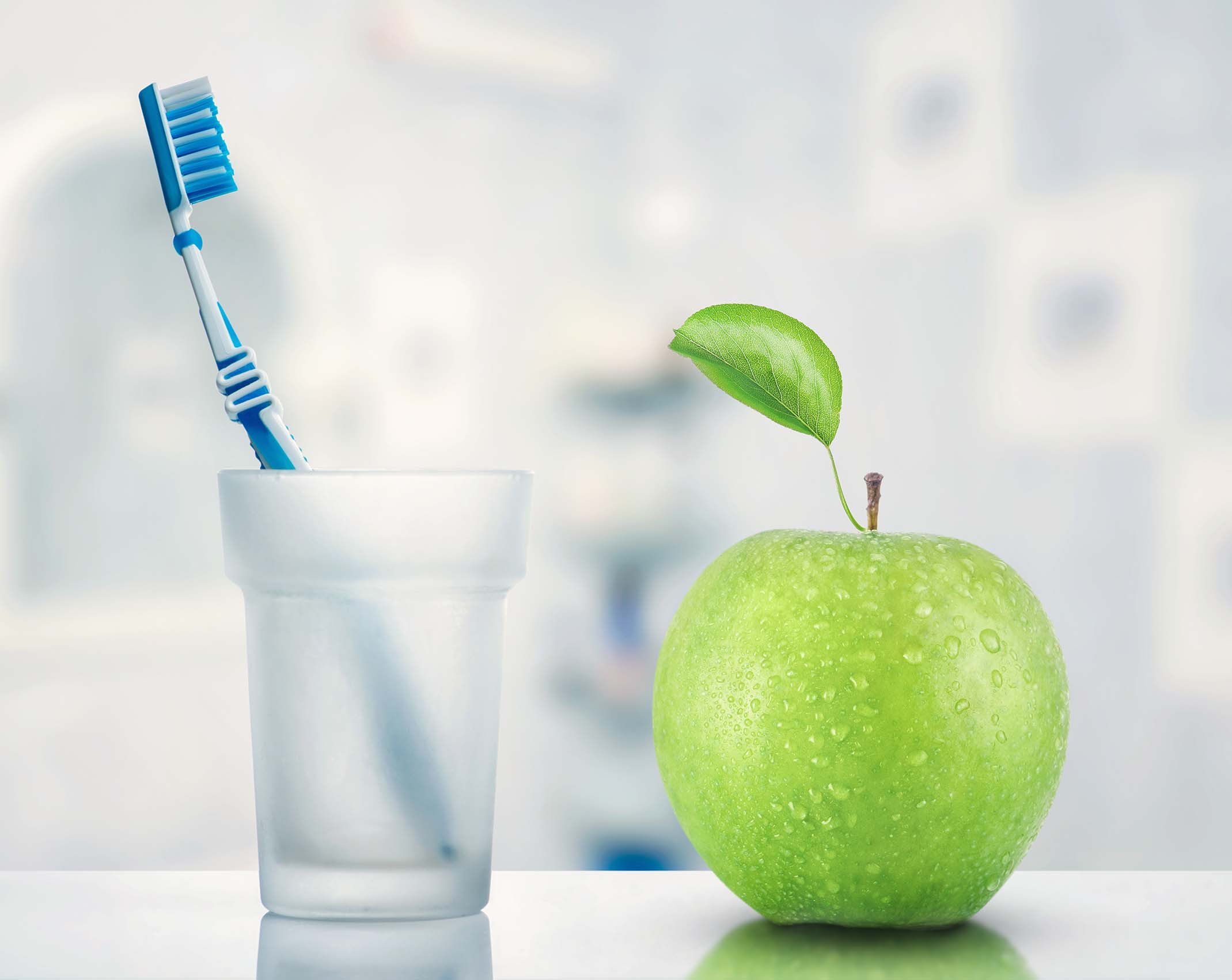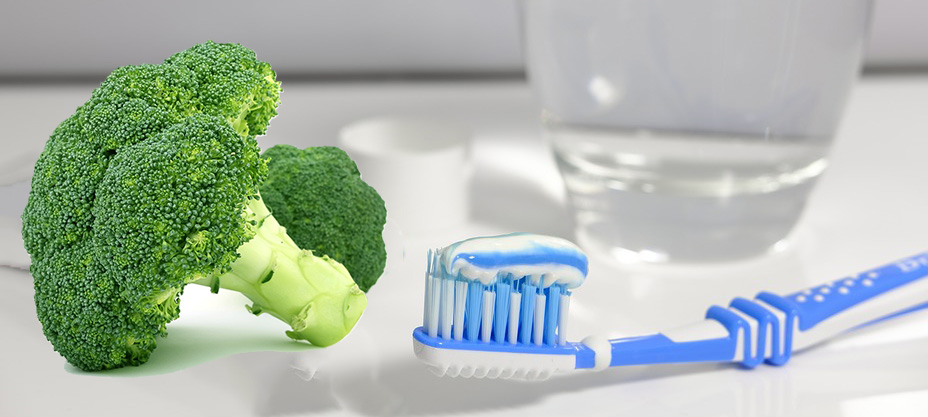
From Brushing to Broccoli:
Nutrition is Also Key to Dental Health
Alaina Hart, MPH, CHES – Health Educator, Dental Health Theater Manager
Most elementary school-aged children know the basics of good dental health habits:
- Brush your teeth at least 2 times per day
- Floss your teeth at least 1 time per day, and
- Visit the dentist twice a year.
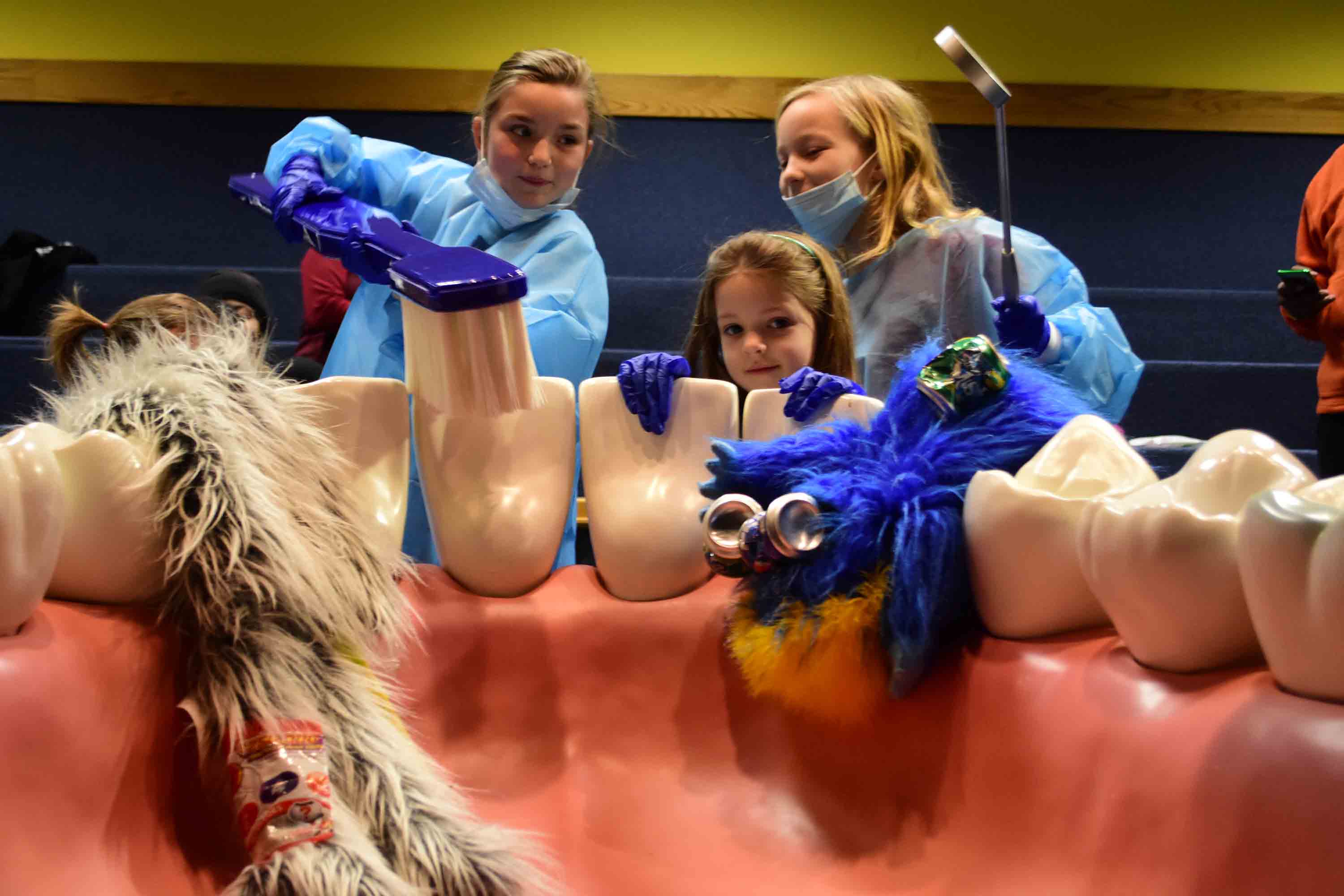
Kids practicing brushing “Mr. Big Mouth’s” teeth at the Poe Center.
However, keeping your teeth healthy requires more than just these good habits. The food you eat also plays a major role in your oral health, in addition to overall health. According to the Centers for Disease Control (CDC), “tooth decay (cavities) is one of the most common chronic conditions of childhood in the United States.” Untreated tooth decay can cause pain and infections that may lead to other health problems, such as heart disease.
The great news is that tooth decay is preventable. Practicing a healthy brushing and flossing routine plus making good choices about the foods you eat is the perfect recipe for a healthy mouth and body.
5 Good Foods for Dental Health
The American Dental Association recommends the following nutrition for optimum dental health:
1. Water Rules!
Water, especially fluoridated water, is the best drink of choice for maintaining good oral health. Fluoride helps to strengthen teeth, which aids in preventing tooth decay. Sodas, juice, and sports drinks may be good for washing food down, but they can leave unwanted sugar behind on your teeth. Water helps to clean your mouth by washing away food residue and cavity-causing bacteria. Read more about “why water is the best beverage for your teeth.”
2. Calci-Yum
Milk and other dairy products contain the mineral calcium, which is important for keeping teeth and bones healthy and strong. According to the National Academy of Science, children between 9-18 years old need the most calcium per day. Dairy foods are also rich in potassium, which helps regulate healthy blood pressure. Choosing low-fat or fat-free dairy products are best, as they contain little to no solid fat. Read more about why “a healthy mouth needs plenty of calcium.”
Don’t fret if you’re lactose-intolerant. The following non-dairy foods are all good sources of calcium: dark-green leafy vegetables, canned fish, almonds, soy and soy products, milk alternatives, calcium-fortified juices, cereals, and breads
3. Lean Proteins
Next to calcium, phosphorus is the most plentiful mineral in your body. Phosphorus-rich foods, such as meat, poultry, fish, milk and eggs help strengthen, your teeth and gums and provide valuable protein. Phosphorus also works to keep your kidneys healthy, in addition to building, maintaining, and repairing your body’s tissues and cells. Read more about phosphorus.
4. Fruits and Veggies
Eating plenty of fruits and vegetables are important for maintaining a healthy diet and a healthy smile. Since they are high in water and fiber, fruits and vegetables balance out the sugar they contain and help clean your teeth. Crunchy fruits and vegetables act like a toothbrush and help scrape food particles and bacteria away from teeth. Lastly, chewing alerts the body to produce saliva (spit), which washes away harmful acids and food particles on teeth.
5. Nuts about nuts
Nuts contain protein and minerals important for overall good health. Most nuts are low in carbohydrates and don’t increase your risk of cavities. Why is that? Tooth decay is caused by acid-producing bacteria that are activated by carbohydrates.
So next time you purchase toothpaste, add some broccoli to your shopping list. Your teeth will thank you for it.
References:
- Children’s Oral Health. Centers for Disease Control.
- Four Reasons Water is the Best Beverage for Your Teeth. Mouth Healthy. American Dental Association.
- Good Foods for Dental Health. Mouth Healthy. American Dental Association.
- Healthy Nutrition for Healthy Teeth. Eat Right. Academy of Nutrition and Dietetics.
- Healthy Smiles, Healthy Hearts. Dental Dental.
- Nutrients and Health Benefits. Choose MyPlate.Gov. United States Department of Agriculture.
- Phosphorus. University of Maryland Medical Center.
Featured Program: Clean & Chompin’
Grade Level: 2nd – 3rd | Program Length: 45 minutes
You be the dentist! Practice tooth brushing and flossing on Mr. Big Mouth’s extra-large teeth. Pick healthy habits and nutritious snacks to prevent tooth decay. To help reinforce the importance of regular dental check-ups, volunteers will create a decay equation explaining how sugar and plaque lead to cavities.
The Poe Center offers dental health programs for pre-Kindergarten – 3rd grade. Schedule a program with us today.
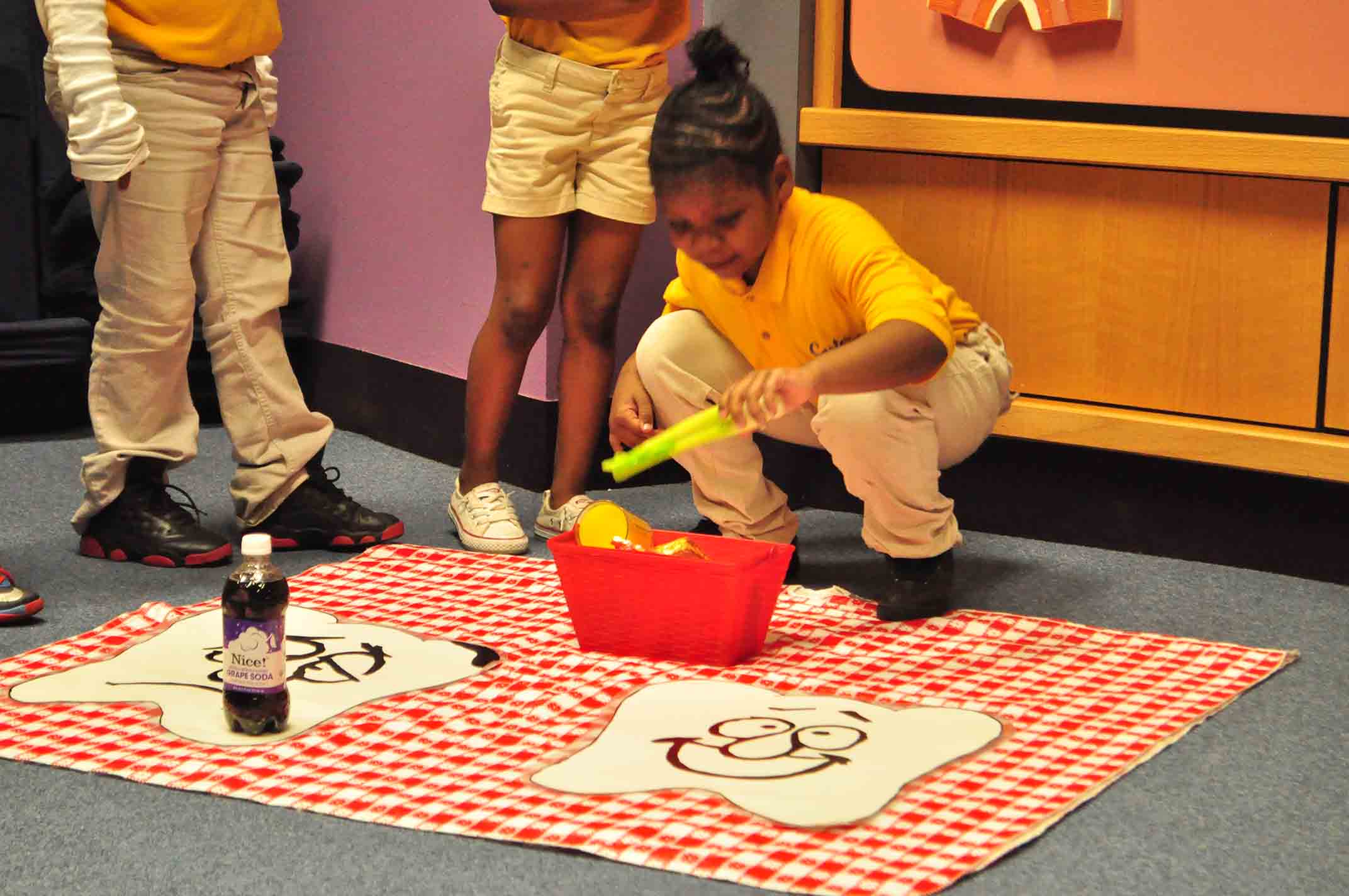
For the Classroom: What’s In Your Bones
Objective: To demonstrate the effects of acidic foods on bones and teeth.
Grades: 5-8
Materials:
- 2 clear mason jars with lids
- 2 clean, cooked chicken wing bones with meat and cartilage removed
- Milk
- Vinegar
- Pins
Directions:
1. Have students examine bones before they are placed in jars. Poke the bones with straight pins to test how hard the bones are. Instruct students to record results.
2. Place one chicken bone in a jar and cover it with milk. Place other chicken bone in second jar and cover with vinegar. Cover both with lids and let soak overnight.
3. Each day for 7 days, replace milk in jar so it does not spoil.
4. After one week, take the bones from each jar and rise them off. Allow students to test bones again by pricking with pins and bending.
5. Record results. Which bone was stronger in the end? Discuss how the bone soaked in vinegar was weaker. Vinegar is an acid that pulls calcium from the bone. Sodas contain a type of acid called phosphoric acid, which can prevent your body from getting enough calcium if you choose soda over calcium rich foods.
